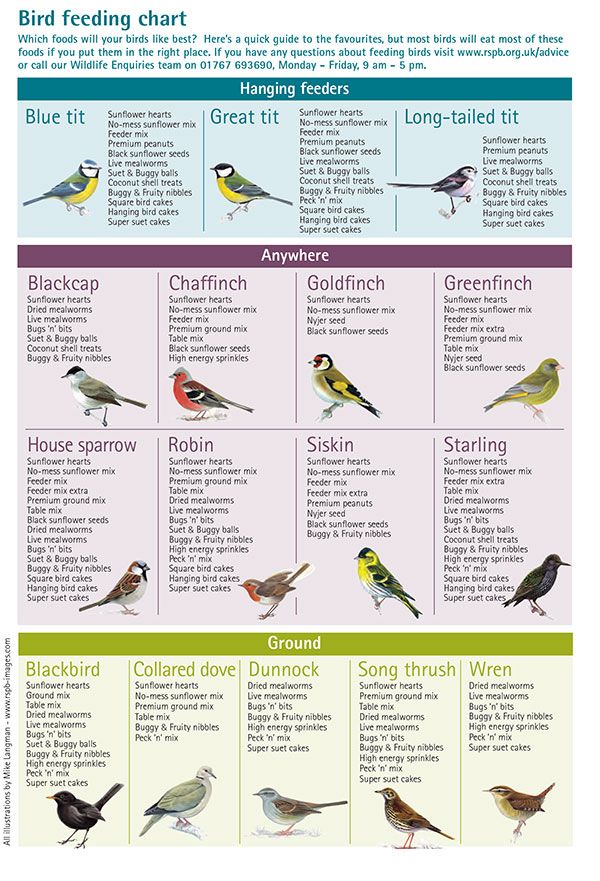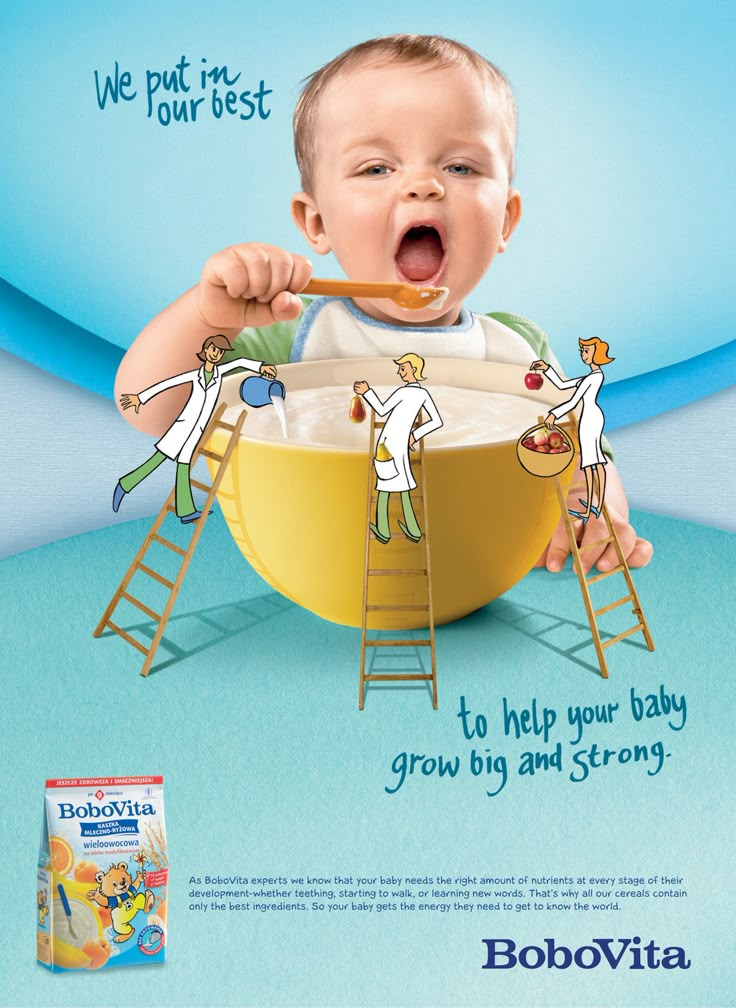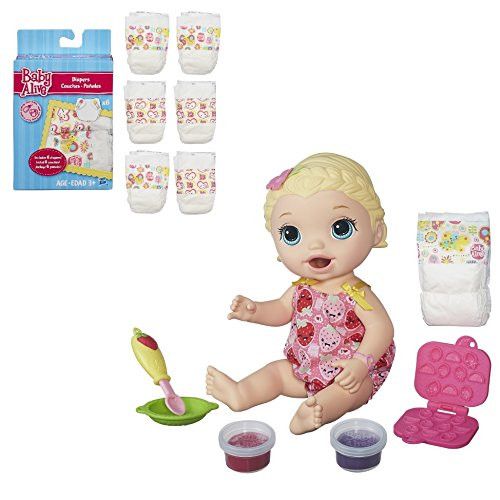What to feed baby blue tits
What Do Blue Tits Eat? (Complete Guide)
What do blue tits eat in the winter?
What do blue tits eat in the summer?
How do blue tits find food?
How often do blue tits eat?
What do baby blue tits eat?
How do you attract blue tits?
What do blue tits drink?
What is the best bird food for blue tits?
What eats blue tits?
Blue tits, (Cyanistes caeruleus), are a very popular bird in the UK. They are so entertaining to watch as they float, fly and jump around, and they are seriously cute. If you enjoy seeing birds in your garden, Blue tits are likely high on your list of birds you'd like to see. So, we're finding out what these little blue beauties eat and what you can use to draw them into your garden. So let's get into it, what do blue tits eat?
Blue tits are highly active feeders. They enjoy eating insects and spiders that they find as they float effortlessly through tree branches in natural woodland. They are also huge fans of caterpillars of the winter moth (they feed their young almost exclusively caterpillars).
Blue Tits will travel great distances to hunt down these caterpillars too, but wouldn't we all? They sound delicious!
Eurasian Blue Tit feeding on a green caterpillar
As we'll learn throughout this blue tit article, these birds eat a lot, and they have a very varied diet. So, if you want to draw blue tits into your garden, you won't need to go hunting for caterpillars.
Blue tits are one of the easiest birds to draw into your garden because they will eat just about anything. As well as their caterpillar obsession, they love seeds and nuts. So, any quality bird food should draw them into your garden. If there are trees in your garden, you may not even need bird food. These guys love flying around in trees seeking spiders and other small insects, so keep a watchful eye on your trees.
What do blue tits eat in the winter?
When there are fewer insects around in the colder months, blue tits, like great tits, will seek out berries, nuts and seeds. They will still actively look for insects and grab any they can find, but they will lean more towards a veggie diet in the winter.
They will still actively look for insects and grab any they can find, but they will lean more towards a veggie diet in the winter.
If you want to keep blue tits in your garden in the winter, fat balls and peanuts are a good option. Black sunflower seeds are also great as they will stick around for a while, removing the husks.
Blue Tit foraging for seeds and mealworms on a moss covered log
What do blue tits eat in the summer?
Blue tits eat a lot, and during the summer, when insects are highly active, they are not too picky. Any types of insects, caterpillars and spiders are all highly sought after. They will still come to your garden for seeds and nuts, but they will be highly active looking for natural protein in trees.
How do blue tits find food?
Blue tits like to dodge and weave around tree branches in search of any insects on the tree. They will also happily forage on the floor, though. They enjoy foraging through dead leaves for insects, but you'll also likely see them in your garden after you've cut the grass. They will pick their way through your grass trimmings and grab any insects in their path.
They will pick their way through your grass trimmings and grab any insects in their path.
Blue Tit foraging for seeds on the ground
How often do blue tits eat?
Blue tits are highly active eaters. They will eat about 100 times a day. This starts when they are still in the nest too. So you can imagine how busy blue tit parents are! This is probably why blue tits always look like they are in a rush! Blue tits move very quickly and often, so they need a lot of energy to keep this up. So, this is why 100 juicy insects meet their end each day!
What do baby blue tits eat?
Baby blue tits are fed a lot of caterpillars. If the environment allows, their diet will be exclusively caterpillars of the winter moth. Blue tits love these and go to great lengths to get their beaks on them.
These caterpillars, like most, love to spend their days eating leaves and blossom on just about any tree and shrub. So, if you have trees and bushes in your garden, don't be surprised to find some blue tits hovering and foraging around them.
Blue Tit feeding its young caterpillars in the nest
How do you attract blue tits?
As blue tits are almost always hungry, they are quite easy to attract into your garden. They love seeds, nuts and fat balls and are always partial to mealworms. They eat these most of the year too. However, it's best to feed them fat balls and nuts in the winter as it helps keep them strong and warm.
Blue tits can be quite nervous about using bird feeders, though. Don't worry; the tits have nothing against you. It is the pesky house sparrows that they are nervous about. In order to keep the tits and sparrows separate, it's best to have a few feeding locations throughout your garden. The blue tits will keep a watchful eye, and when one of the feeders is quiet, they will swoop into action.
Blue Tit eating from a bird feeder
What do blue tits drink?
Blue tits, like most small birds, get most of their water from their food.
Birds don't have sweat glands like us sweaty folk, so they don't lose as much water as we do. They do lose some water in their droppings, though. So, blue tits need to drink water a couple of times a day.
They do lose some water in their droppings, though. So, blue tits need to drink water a couple of times a day.
Some blue tits have also learnt how to remove the foil from milk bottles. They are also teaching their young how to do it. So, if you get your milk delivered, a blue tit might beat you to it in the morning!
Blue Tit drinking water
What is the best bird food for blue tits?
The best food for blue tits is a natural mix of seeds and nuts.
They also love mealworms and will happily eat suet balls too. In the summer, give them some seeds and nuts and mealworms if they've been good blue tits. In the winter, nuts and fat balls are the best options. They will keep them nice and strong throughout the colder months.
Eurasian Blue Tit eating bird seed
What eats blue tits?
Despite how cute we think blue tits are, some predators think they look more like lunch! Sparrowhawks, owls, weasels and sometimes even great spotted woodpeckers have a nibble on them. Sparrowhawks are most likely the biggest predator of blue tits, though.
Sparrowhawks are most likely the biggest predator of blue tits, though.
Expert Q + A
Ask a question
Do you have a question about this topic that we haven't answered? Submit it below, and one of our experts will answer as soon as they can.
Help with a baby blue tit that we found please! - Ask an expert - Wildlife
I have not long got home from work to find my husband has found a baby blue tit in our kitchen (i have no idea how it got there) but then put it in a big fish tank with a towel. We have been giving it bits to drink on a small brush and some small bits of apple. It seems to be settled at the moment, going to sleep. The big question is what to do next. My husband said he tried putting it outside but he would't budge or fly. He is that small that I doubt he could fly. At a guess I would say 7-10 days old maybe?
-
Hello stevie,have you got a vent in your kitchen, I just wondered or if there was a nest nearby, sometimes you can hear other babies.
 Does the chick look big enough and fluffy enough to have fledged? I hope an expert will come along to give advice, in the meantime you have done the right thing,hopefully it will be ok til the morning. The parents will feed their chicks caterpillars if you fancy a hunt round in the morning! Good luck Pat
Does the chick look big enough and fluffy enough to have fledged? I hope an expert will come along to give advice, in the meantime you have done the right thing,hopefully it will be ok til the morning. The parents will feed their chicks caterpillars if you fancy a hunt round in the morning! Good luck PatPat Adams - Flickr - BLOG
-
I can only tell you what my friend did last year when she found some wagtails that had had their nest destroyed. She put them in a bird cage and fed them on chopped up mealworms mixed with a meat flavoured cat food, she fed them every half an hour with tiny morsels off a pair of tweezers till they had had enough (about 4-5 at each feed but increasing as they got bigger.) water was given via a dropper. They all survived and we let them go when they were old enough to fly. She used to work at a wildlife sanctuary. Hope this helps. Their mum would be feeding her catapillars or insects so try to find similar if possible.

Good luck
You have no control over what life & people throw at you - but you have full control over how you deal with it!
-
In reply to Chez:
tinned cat food is a good substitute
Apples a no no
if no sign of nest contact an animal sanctuary or RSPCA
Ray
a good laugh is better than a tonic
-
In reply to Barnsley lad:
Well, when we woke up this morning it had died :( I really hope we didn't kill it with apples, I was going to visit pets at home today to get advice and food. I'm sure we have a nest somewhere because I can hear scratching in the walls.
northdevonfocus, we have vents all over our house as it's private rented. I'll have to get the other half to have a good look.
Thanks for all your replies!
-
In reply to stevie v:
Oh stevie that's a sad outcome for you. Well done for trying your best for the little fella.
 Pat
PatPat Adams - Flickr - BLOG
-
In reply to northdevonfocus:
Well done for taking the time to help and also for seeking advice on the forum. Sadly this one didn't make it. Raw mince is excellent for baby Blue Tits. Just cut it into small 'maggot sized' pieces and feed with tweezers and also (as suggested before) a small amount of water via a dropper. They should also be kept hand warm all the time. I nursed an abandoned Great Tit nestling a few weeks ago and kept it in my hands the whole time to keep it warm. It woke up every 10 minutes or so for more mince and then dozed off again. I was lucky enough to have it collected a few hours later, but keeping it warm was as important as feeding it. To be honest I wouldn't have known that unless someone from a rescue centre had told me to do it!
Unicum arbustum haud alit duos erithacos
(One bush does not shelter two Robins)
Zenodotus (3rd Century B.
 C.)
C.) -
In reply to monkeycheese:
you did your best sorry about the outcome
Ray
a good laugh is better than a tonic
-
- Reply to thread Suggest as Answer Use rich formatting
How to organize proper nutrition for Ojos Azules
Ojos Azules, or as it is also called “blue-eyed” (translated from Spanish, “Ojos Azules” means “blue eyes”), contrary to popular belief, they have nothing to do with Siamese cats, and the only what unites them is the color of the eyes.
True, this does not mean at all that there is at least some connecting thread between them. The eye color of Siamese and Ojos Azules is caused by completely different mutations, which only confirms the absence of family ties between them.
Unfortunately, this breed is still extremely rare outside of its main habitat - the US state of New Mexico. However, after the standard for this breed was adopted (this happened in 1991), the Ojos Azules population was able to cross the American border, although, of course, there is no talk of a massive invasion of other countries.
Their origin is more connected with natural processes than with artificial selection, and apparently this has also affected their gastronomic preferences. I must say that in nutrition, the ohos azules are quite unassuming. However, not only in nutrition, but in content in general. In general, we can say that any owner can raise a strong and healthy animal from a kitten, feeding him both natural food and packaged or canned food.
Proper selection of food is the key to a cat's health. In the event that the nutrition of a representative of this breed is organized incorrectly or simply with serious errors (which happens even more often), then this will definitely affect the condition of his coat within a very short period of time.
The ohos azules fur coat will become dull and it is possible that even excessive hair loss will begin. And if the loss of these exceeds the allowable rate, then as a result, foci of baldness may appear. However, don't think that bald spots look like completely hairless patches: in fact, they can just be places with very sparse hair, which is very often seen on malnourished cats. If this happens against the background of untimely deworming, then the result may be disturbances in the development of internal organs and a slow development of the intellect.
Poor nutrition immediately affects the coat of ohos azules.And if someone thinks that this is an exaggeration, then he is mistaken, because, unfortunately, this is not fiction, but a real reality.
Due to the fact that cats cannot speak, they cannot tell their unreasonable owners what problems malnutrition causes in her body.
For this reason, the owner of such a rare breed as the Ojos Azules should carefully consider and plan how his pet will be fed and then he can avoid most of the potential health problems that could arise in the future.
Other consequences that an ill-organized diet can lead to are slow physical development, lethargy and inactivity, bad mood and apathy, inflammation of the mucous membrane of the eyes, that is, the well-known conjunctivitis and various kinds of problems with the gastrointestinal tract.
Due to improper nutrition, the cat can become lethargic and weak.Of course, hardly any sane owner would want to have an animal with poor health in his house. Therefore, your blue-eyed pet should be fed in the same way as you and your household, that is, tasty, nutritious and satisfying. However, this does not mean that you can feed ohos azules with the same products as people, especially since people are complex creatures and eat, maybe tasty, but not always nutritious and rational.
You should carefully study the rules for feeding cats and, based on them, already compose a cat's diet.
The most reasonable and, by the way, the simplest solution to this problem would be to feed your kitten those foods that cause him the greatest interest. To do this, you should offer your little pet a wide variety of products (within reasonable limits, of course: chips, for example, or mayonnaise, you should not even offer) and look at his reaction. It is possible that he will opt for fish or liver (cats are usually very fond of them), but he may also like raw potatoes or cucumbers.
To do this, you should offer your little pet a wide variety of products (within reasonable limits, of course: chips, for example, or mayonnaise, you should not even offer) and look at his reaction. It is possible that he will opt for fish or liver (cats are usually very fond of them), but he may also like raw potatoes or cucumbers.
Do not be surprised and think that this is some kind of deviation from the norm and immediately run to the veterinarian for help. Most likely, the kitten feels which foods he needs the most and will be able to make the right choice, since each of them has their own individual needs. In any case, this approach is the fastest way to determine what kind of food your pet needs. Indeed, in order to study in detail the features of the cat's menu and make a rational diet, time is needed, and kitten food is needed now.
Blue-eyed, or ohos azules. The only thing to remember from the start is that all meats are best served boiled rather than raw, and that bones, especially chicken bones, should be avoided. The same can be said about fish, the bones of which often get stuck in a cat's teeth and can damage internal organs or get stuck in the throat, from where they can only be removed with the help of a veterinarian. Therefore, fish meat should be immediately separated from the bones and only then offered to your pet.
The same can be said about fish, the bones of which often get stuck in a cat's teeth and can damage internal organs or get stuck in the throat, from where they can only be removed with the help of a veterinarian. Therefore, fish meat should be immediately separated from the bones and only then offered to your pet.
Some owners, in order not to fool around with this procedure, simply grind the meat with bones in a meat grinder or mixer and thereby eliminate the danger posed by the sharp edges of the bones.
Almost all representatives of this breed respond well to ready-made foods and sometimes even prefer them to natural products. In this case, the owner does not even have to worry about compiling a complete diet, because such feeds already contain all the substances necessary for the cat, unless, of course, the quality of the feed is high enough.
And if ohos azules feels good and is in a good mood, then this can be regarded as a result, including good nutrition.
If you find an error, please highlight the text and press Ctrl+Enter .
Snowshoe - description of the blue-eyed cat breed
The two most distinctive features of the snowshoe cat breed are the coat and colored markings. They are reminiscent of the Siamese ancestors of this cat. Snowshoe kittens born with snow-white dark spots appear in the first few years of life.
Snowshoe cats are either seal point or blue point like the Siamese. However, the color of their coat resembles a tuxedo due to the paws of a different color. For them, they should thank the genes of the American Shorthair cat, explains the International Cat Association (TICA). With age, the coat of a snowshoe cat usually darkens.
With age, the coat of a snowshoe cat usually darkens.
The uniqueness and beauty of the breed, coupled with its athletic physique, make a striking combination. Unlike their Siamese relatives, this breed has a more rounded muzzle and a thicker body. Male Siamese snowshoes are much stronger than females, but both bodies are distinguished by well-developed muscles. Usually the head of these cats is triangular in shape, although some snowshoes may have a round head. Snowshoe has long, rounded ears.
Another striking feature of snowshoe is the eyes, which range in color from deep blue to pale blue. Regardless of the shade, these blue eyes are always bright and shining.
Snowshoe cats: personality
Snowshoe is a very kind and intelligent creature with a playful disposition. This cat will do everything possible to get the attention of the owner. She would jump into his lap as he worked, or tirelessly follow his every move from a high perch. Snowshoe owners should consider buying a cat house because this furry friend loves to sit on top.
Snowshoe owners should consider buying a cat house because this furry friend loves to sit on top.
Snowshoe is definitely not a lone cat in character. He needs companionship and will be unhappy if left alone for a long time. Cats of this breed become attached to one of the owners. This lucky man will soon find that he has a constant companion - like a dog.
“They like to be around you, but unlike dogs, they prefer to lead you rather than follow you,” explains TICA. “Once you get turned on, you probably never want to be without that cat again.” Snowshoes are most happy when everyone is at home, and their good nature makes them great for families with small children or other cats.
Snowshoe Care Description
These cats love their family. "If you're looking for an aloof and unsociable cat, snowshoe isn't for you," says Animal Planet. “Fans of the breed claim that Snowshoes do not realize that they are cats, considering themselves to be people. ” Having met the owner at the door upon returning home, the snowshoe cat will begin to tell him about what she was doing while he was away. This feature of the snowshoe was inherited from their Siamese ancestors.
” Having met the owner at the door upon returning home, the snowshoe cat will begin to tell him about what she was doing while he was away. This feature of the snowshoe was inherited from their Siamese ancestors.
Since Snowshoe is very smart, she can be prone to mischief. It must be constantly occupied, especially when no one is at home. For this, a periodically updated collection of toys for cats is suitable. These pets are athletic and fast, and physical activity will certainly benefit them. They will appreciate the rapid pursuit of a toy mouse, and the owner may be amazed at the speed with which the cat will try to catch up with her.
Snowshoe can jump into the bath because he loves water. While many cats enjoy playing with water and sticking their paws under the tap, snowshoes also love to swim. If you provide her with a shallow container of water to splash around in, she can enjoy herself for hours.
History of the origin of the breed
A relatively new breed of snowshoe appeared by chance. “In the late 1960s,” says PetMD, “a Siamese cat breeder from Philadelphia, to her great surprise, found three kittens in a litter with the usual Siamese pattern, but with unusual white paws, as if in socks.”
“In the late 1960s,” says PetMD, “a Siamese cat breeder from Philadelphia, to her great surprise, found three kittens in a litter with the usual Siamese pattern, but with unusual white paws, as if in socks.”
These fluffy babies fascinated the woman at first sight, and some time after the start of breeding, she turned to another breeder for help. “This led to the crossbreeding of Siamese cats with American Shorthairs,” says PetMD. But in the last few decades, the Oriental Shorthair and the stockier "good old Siamese" have become the preferred combination for snowshoeing. As a result, the breed appeared in the form in which it is known today.
A factor slowing down the popularity of snowshoes and making them rare is that breeders adhere to the preferred pattern described above so tightly that it prevents recognition of the breed by many of the world's leading cat organizations. It is very difficult to reproduce such marks, since recessive genes are responsible for their appearance.
The recorded history of the breed is ambiguous and contradictory. According to TICA, "much of the history of snowshoe has been lost due to careless record keeping and retention." This makes it difficult to trace the origin of the breed. Interest in snowshoe dropped to a low at 1970s, but then their popularity began to rise again with the breed being accepted as an "experimental" breed in the 1980s and gaining full status recognition from TICA and the American Cat Fanciers Association (ACFA) in the 1990s.
One of the most famous cats in pop culture is the Grumpy Cat, whose real name is Tartar Sauce. She bears some resemblance to snowshoe, but her owners claim that she is a cross between her and her. They say that "she probably had Persians, Ragdolls or Snowshoes in her family." However, Tartar Sauce's parents were not Siamese cats or direct descendants of the Asian line.
According to the ACFA, despite the novelty of the breed, snowshoe traits have been seen in cats since before the 1960s: four white legs are visible, and on an old Japanese silk screen, where a similar cat looks around the corner at a spider.











